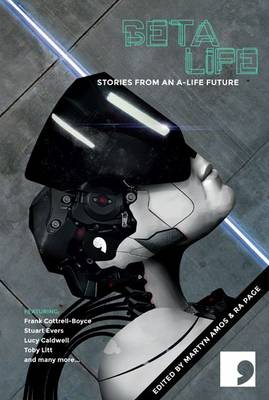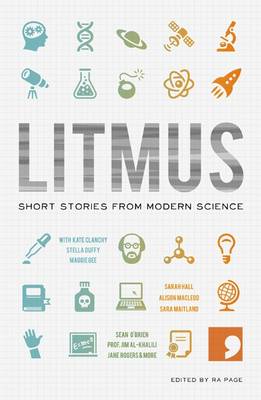Science-Into-Fiction
1 primary work • 3 total works
Book 6
Beta-Life
by Frank Cottrell Boyce, Julian Gough, Toby Litt, Stuart Evers, and David Vann
Published 27 July 2014
Computers are changing. Soon, the days of silicon-based logic-gate computing will seem like a quaint and distant memory from a charmingly clunky past. Likewise, robots--once designed by mere mortals--will be soon be devised solely by the ultimate designing agency, evolution (with the help of computer modeling of natural selection). Meanwhile, A-Life (artificial life) and mathematical biomimicry--algorithm-based virtual models that map the collective intelligence of nature onto manmade systems--will become as big as genetics is right now. What this future will look like, exactly, is beyond even the scientists. But this book attempts to start the process of imagining it, by pairing researchers at the cutting edge of A-Life and Unconventional Computing with some of the most exciting writers working in English.
Bio-Punk
by Toby Litt, Simon Van Booy, Jane Rogers, Sara Maitland, Gregory Norminton, Tibor Fischer, Salley Vickers, and Frank Cottrell Boyce
Published 4 October 2012
A collaborative work between scientists and ethicists working at the forefronts of their respective fields and short story writers, this collection attempts to predict some of the potential ethical side-effects of the groundbreaking biomedical research currently being developed. Exploring the increasingly gray area between the fantastical and that which is already within our reach--including programmable memories, nano-tech implants, fatherless reproduction, and interspecies reproduction--this unique volume fuses fact with fiction and speculates on the future of scientific progress. With an appeal to both science fiction fans and academics, the contributors include authors Jane Rogers, Justina Robson, Sara Maitland, Sean O'Brien, and Simon Van Booy as well as scientists and ethicists Dr. Ainsley Newson, Professor Bruce Whitelaw, Dr. Jane Calvert, Professor Martyn Amos, and Dr. Nihal Engin Vrana, among talented others.
"Like the creation myths they supersede, the revelations of science are seared into our collective imagination through storytelling. From Archimedes' bath to Newton's apple, vivid accounts of scientific discovery help us understand the principles behind each theory, and add to the larger narrative of how the universe works, and how we came to be here. This anthology draws out and distills science's love of narrative from a wide range of scientific disciplines, weaving theory into very human stories, and delving into the humanity of theorists and experimenters as they stood on the brink of momentous discoveries: from Joseph Swan's original light-bulb moment to the uncovering of 'mirror neurons' lighting up empathy zones in the human brain; from Einstein's revelation on a Bern tram, to Pavlov's identification of personality types thanks to a freak flood in his St. Petersburg lab. Each story has been written in close consultation with scientists and historians and is accompanied by a specially written afterword, expanding on the science for the general reader."--Publisher description.


